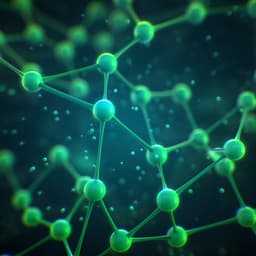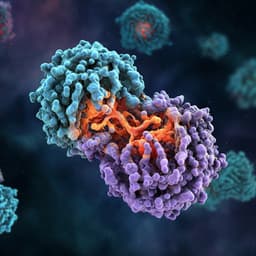
Engineering and Technology
Design of highly efficient deep-blue organic afterglow through guest sensitization and matrices rigidification
S. Xu, W. Wang, et al.
Discover groundbreaking advancements in deep-blue organic afterglow materials developed by researchers Shen Xu, Wu Wang, Hui Li, Jingyu Zhang, Runfeng Chen, Shuang Wang, Chao Zheng, Guichuan Xing, Chunyuan Song, and Wei Huang. Their innovative water-responsive technology creates highly luminescent patterns suitable for anti-counterfeiting, lasting over a month with the ability to be effortlessly rewritten. Don't miss out on the future of organic optoelectronics!
Playback language: English
Related Publications
Explore these studies to deepen your understanding of the subject.







